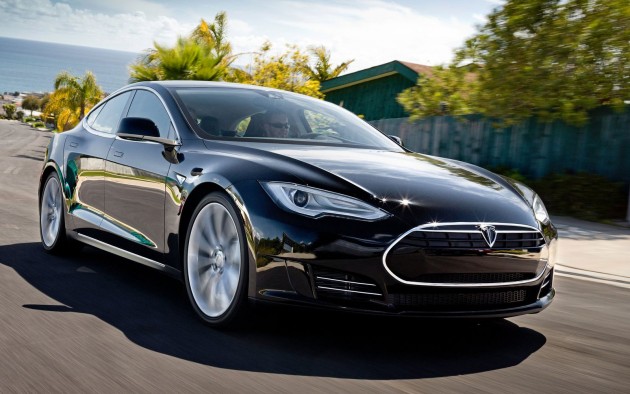
After Tesla Motors CEO Elon Musk went onto Twitter earlier this week to tease the unveiling of "the D and something else" (snigger all you like), the company has finally pulled the wraps off its latest, most powerful model - the Tesla Model S P85D.
The "D", if you're wondering, stands for "Dual Motor", which hints at the car's incredible powertrain. Supplementing the rear-mounted 310 kW (416 hp) motor on the regular Model S in P85 trim is a separate 165 kW (221 hp) motor in front in a manner similar to the upcoming Model X SUV, effectively making the P85D four-wheel drive.
Together, the two motors combine to push out 515 kW (691 hp) and an astonishing 931 Nm of torque. This cuts the 0-100 km/h sprint time by a full second over the rear-wheel drive P85 to 3.2 seconds, the top speed is now 250 km/h, and despite using the same 85 kWh lithium-ion battery as before, Tesla claims that the P85D's range has actually increased by 16 km to 443 km thanks to improved drivetrain efficiency.

Despite the massive levels on performance on offer, there's very little to mark out the P85D from the rest of the Model S range – just a subtle badge on the boot lid.
In addition to the P85D, there will also be lower-powered all-wheel drive models – the 65D and the 85D. Both models feature 140 kW (188 hp) motors front and rear, but the 65D has a smaller 65 kWh battery that limits range to 362 km, while the 85D can go as far as 475 km on a single charge thanks to the same larger 85 kWh battery as its more powerful siblings.
There's the new Autopilot, too - cameras, radars and 360-degree ultrasonic sonar sensors have been added as standard to all Model S variants (including two-wheel drive ones) as the company looks to keep up with established luxury segment players on the active safety front.

The addition of all this technology, along with a Porsche 918-esque electromechanical braking setup is also the first step towards Tesla's ultimate goal of self-driving cars, which Musk says will arrive in another five or six years.
There will eventually be a driverless self-parking feature, automated emergency braking, speed limit detection, active cruise control, lane departure warning and even an automatic lane changing feature which activates when the driver indicates, moving to the next lane when the car decides it is safe to do so. These features will be added progressively to the Model S as part of over-the-air software updates
It is the top-end P85D that will reach customers' hands first - with deliveries beginning in December - while the more pedestrian all-wheel drive models will only hit dealers in February.
Tesla Model S



No comments:
Post a Comment